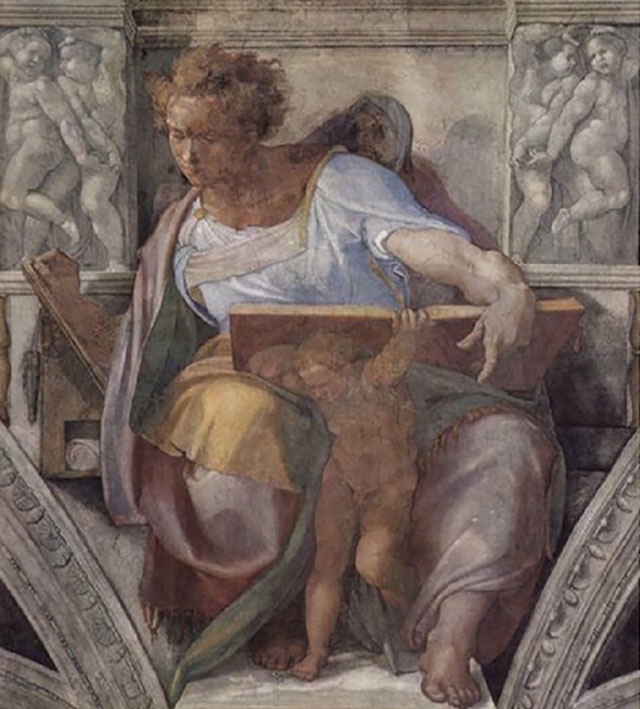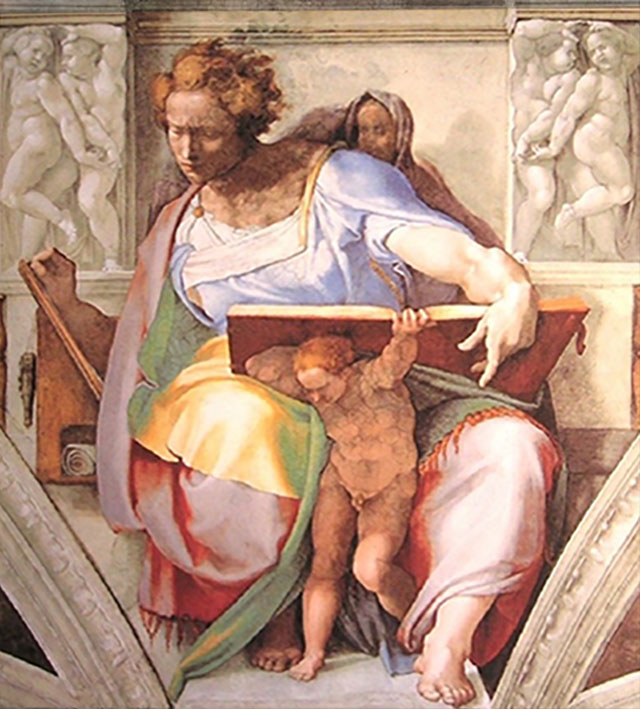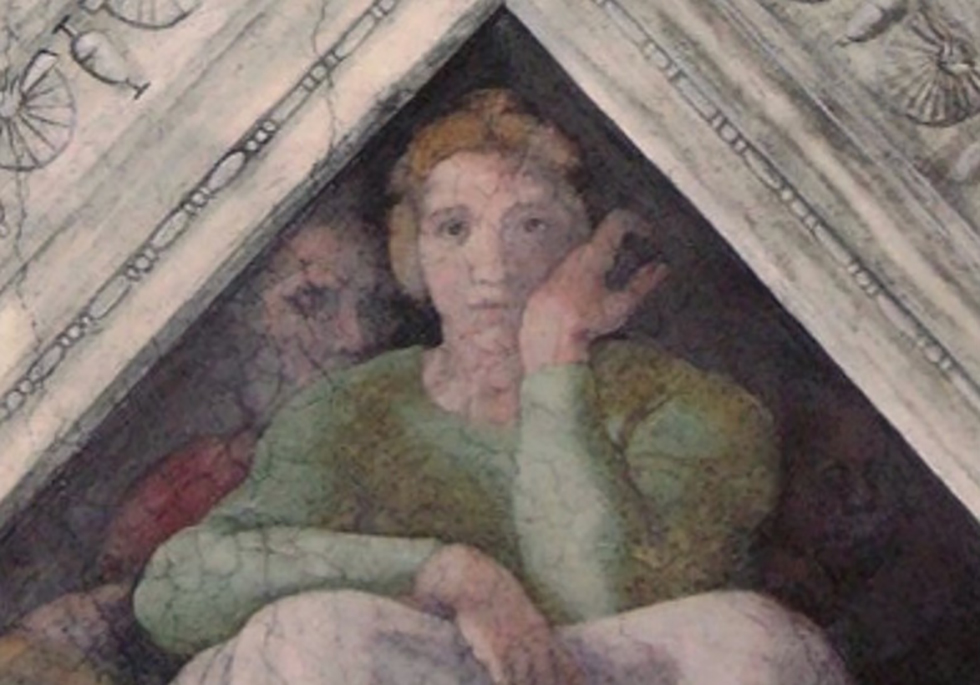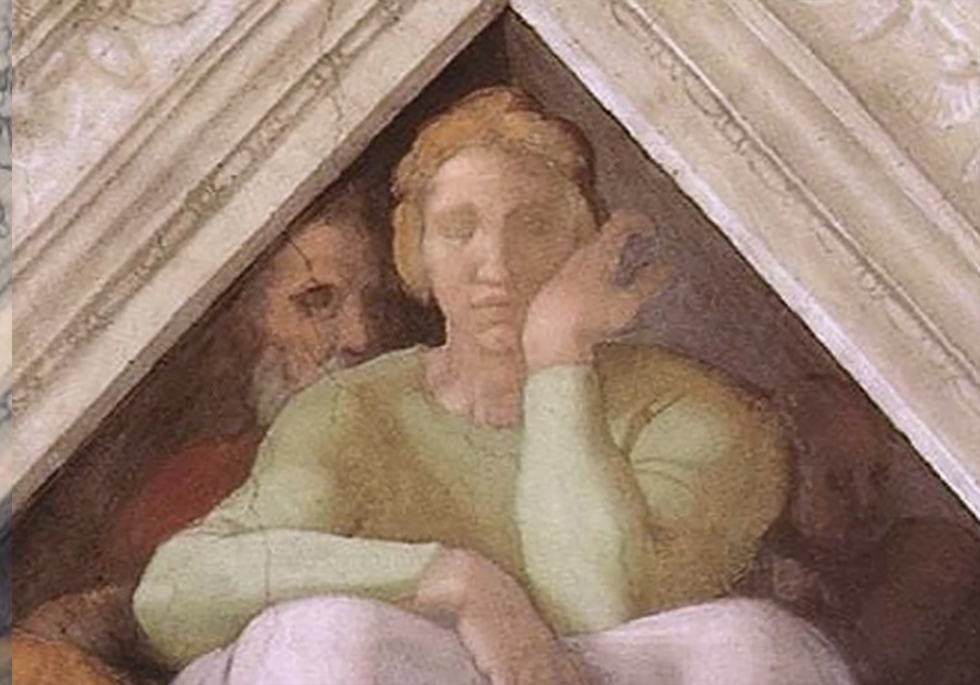When Was The Last Supper Painting Restored
Taking place from 1980 to 1994, the Sistine Chapel restoration was necessitated, according to the Vatican, by soot and grime, which had built up over centuries by called-for candles. In addition, there were cracks in the ceiling that would have ultimately affected the integrity of the work.
When the ceiling was reintroduced to the public in 1994, the majority of observers praised the restoration. The physical ceiling was repaired and reinforced to forbid future harm. And the frescoes were now filled with bright, previously unseen colors.


But perchance they were now as well bright -- brighter than they had ever been during Michelangelo's lifetime. The cleaners thought that Michelangelo had taken a uniform approach to painting the ceiling, that he had always worked buon fresco, adding illustrative details, like shadows and shading, while the plaster was nonetheless wet. So the cleaners assumed that annihilation not buon fresco was either grime or was added in past another creative person, and they removed it.
It became apparent, however, that Michelangelo had painted much of the shadows and detailing on the ceiling al secco, after the plaster dried. And thus, all of these original details were destroyed during the cleaning. Now the figure in the Jesse spandrel is missing his eyes.


And the Jonah figure, which serves equally a focal point of the entire piece of work, is dramatically diminished by the lack of shadow and definition. Many figures in the painting now have a sort of washed out, rough appearance.
How could this have happened, no less to one of the almost significant cultural works of the Western canon? Beck attributed it to the restorers' arrogance, that their conviction in knowing the artist'due south intentions and method led to the painting's ruin. The restorers began their piece of work in relative isolation without consulting an exterior, contained committee of art historians, artists or scientists. Beck pushed for this committee in 1987, when the ceiling was already one-half completed; i did convene later that same year, all the same, and filed a complimentary study.

"The new freshness of the colors and clarity of the forms on the Sistine ceiling are totally in keeping with 16th-Century Italian painting and assert the full majesty and splendor of Michelangelo's cosmos," the report refuted.
Thus, critics were not able to halt what they saw as destruction of Michelangelo's work. Only they were able provoke a response. To date, ArtWatch has still non been widely successful in preventing these sorts of restorations. But ArtWatch has seen success in changing the conversation surrounding restoration, from one that is overly laudatory to one that is initially suspicious.
It was hard for interested parties to track the ongoing work -- the result of the restoration's sponsorship past Nippon Television Network Corporation. The network paid $iv.2 one thousand thousand dollars to the project in exchange for exclusive rights to certificate and photo the restoration. It seems, on its face, like a conflict of involvement, to entrust the proper documentation of the restoration to a company that stood to benefit the about from a positive portrayal. A positive review of the restoration by The New York Times in 1990 noted that Nippon had made the restoration photos prohibitively expensive and had non yet provided the requisite before-and-later photographs that would accost critics' concerns.
Thus, ArtWatch's dual, main concerns are an overzealous arroyo to restoration using new techniques, which risks damages that cannot be reverted, and the influence of corporate money, which calls the ethics and motives of the restoration into question.
In 1978, Pinin Brambilla Barcilon began piece of work on what was, once over again, promoted as the final, administrative restoration of The Final Supper. This time, rather than attempting to retain the work of prior restoration attempts, her goal was to strip information technology all away -- the shellac from the prior restoration included -- and get down to da Vinci's handiwork alone.
Only approximately 20 percent of the original painting had survived.
Barcilon viewed the painting through a microscope then slowly, gently blotted the painting with solvent, using minor bits of Japanese mulberry cloth.
The end issue was a sad revelation: Only approximately 20 percent of the original painting had survived. There was, even so, a trade-off: Barcilon uncovered many details, buried underneath the prior restorations, that were once thought lost. An orange here. A manus's definition there. A face with different dimensions and expression.
The missing parts of the painting, meanwhile, were filled in with beige, to give an indication of what the painting once looked similar. In Barcilon's own words, from her book Leonardo: The Last Supper, which documented her entire procedure:
"Where the pictorial motion-picture show was missing, the initial process was to reintegrate the epitome based on neutral tonal reduction (neutro), intended to create an ideal background of homogeneous colour for the original fragments. In the interest of achieving greater legibility and unity, a method of reintegration that approximated the surrounding color was adopted afterward. Executed in watercolor, the reintegration was particularly laborious and frail considering the surface absorbed the color unevenly, requiring repeated applications and a gradual buildup of tonal intensity."
The book explains and rationalizes the before and after for every part of the painting; it is exhaustive in its attention to detail. To illustrate, here is an excerpt of the earlier state of Thaddeus (the middle apostle in the to a higher place photograph):
"Before the latest restoration, the figure generally appeared nighttime, and the facial features were undefined. A dark diagonal stroke roughly designated the optics. The hair composite in with the grey field of the wall behind the figure, and the almost indistinct volume of the hair was flattened in an abbreviated mass."
And here is an extract of the after state of Thaddeus:
"Numerous and unexpected recoveries of original material emerged from beneath the coating of repaint, particularly in the face and the pilus. The hair reacquired its initial volume, modulated past wavy locks threaded with subtle highlights and fragile white brushstrokes, while a soft grayness glaze skillfully emphasized the hairline. The facial features proved leaner and purer, even on a chromatic level."
Conspicuously, this restoration was a labor of love and devotion; one could hardly spend twenty years nose to olfactory organ with something without it being so. Critics, however, took issue with several points of this restoration, the kickoff being its necessity. If so niggling of da Vinci's original piece of work remained, reasoned critics, and then why strip away the record of prior restorations, which had become a part of the painting's history? What was the sense of having something that was more than Barcilon's watercolors than da Vinci? Shouldn't the more historically noteworthy restorations have remained instead?
"Restorers have a professional imperative, rather than to reflect upon what they're seeing, to do something about it," said Daley.
1 might speculate that the corporate sponsorship, this fourth dimension of tech manufacturer Olivetti, may take also increased force per unit area to act -- to be proactive for the amount of coin that was being spent rather than practice nothing at all.
Science captured the imagination of Western civilization in the wake of World War Ii, which was won, in part, due to the superior technology of the Allies.
"In the 2nd half of the 20th century, restorers, who themselves were technically and scientifically naive, became enthralled and envious of the authority of scientific people and disciplines." said Daley. "Scientific discipline is used to make their activities more than respectable than they might exist. Restorers try to maintain the scientific aura of impregnability."
Science, in other words, can exist used as a cudgel and chat-ender to give cover to untested techniques that may non, in actuality, be all that scientific. And because there are still ongoing, internal debates over major aspects of restoration -- such as whether solvents or soaps are even rubber to use -- ane might conclude that a restoration is often not worth the risk. A risk, Daley claims, was taken with The Last Supper.
"The restorers painted the bare wall in these watercolors, and it'due south made the painting into a kind of modern decoration," lamented Daley.
ArtWatch is not lone in its criticisms.
"[The restorers] decided to proceed without even conducting the proper analyses to make up one's mind how much of the original painting remained," said Mirella Simonetti, a Bologna-based restorer, in a 1995 interview with The New York Times. "And now they show these remaining crumbs, these plates and spectacles, and say information technology is Leonardo."
In a final roughshod irony, Tom Hundley, who wrote well-nigh the restoration for the Chicago Tribune in 1999, fabricated the following cautionary point: The painting, no longer protected by the shellac or any overpainting, was now more vulnerable to the elements and environment than always before.
Source: https://www.engadget.com/2017-07-25-the-last-supper-eataly-conservation-project-art-restoration.html
Posted by: ricardregald.blogspot.com

0 Response to "When Was The Last Supper Painting Restored"
Post a Comment